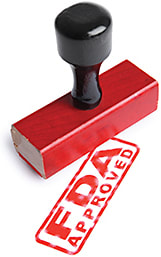BRANDED VS GENERIC PHARMACEUTICALS
Q&A with FDA
Ophthalmology Management asked the FDA to answer some questions about generic medications. FDA spokesperson Timothy Irvin provided these responses.

OPHTHALMOLOGY MANAGEMENT: There is some confusion about what is considered a generic drug. What does the FDA consider to be a generic medication?
TIMOTHY IRVIN: Generic drugs are important options that allow greater access to healthcare for all Americans. They are copies of brand-name drugs that have the same active ingredient(s) as the brand, but may include different inactive ingredients (excipients). Generic drugs are the same as brand name drugs in dosage form, safety, strength, route of administration, quality, performance characteristics, and intended use. The generic manufacturing, packaging, and testing sites must pass the same quality standards as those of brand-name drugs.
Consequently, generics can safely be substituted for brand-name drugs while maintaining the same effectiveness. The FDA considers generic drugs completely interchangeable with brand-name drugs. Substitution is done at the pharmacy level. No additional clinical monitoring is needed by the prescriber because the FDA, as a result of rigorous quality and bioequivalence evaluations, ensures generics are therapeutically equivalent to brand-name drugs.
Although the active ingredient(s) of generic drugs are chemically identical to their brand name counterparts, generic drugs are typically sold at substantial discounts from the branded price. According to the Congressional Budget Office, generic drugs save consumers an estimated $8 to $10 billion a year at retail pharmacies. Billions more are saved when hospitals dispense generic drugs.
OM: What is the difference in the approval process for a generic product compared with a new innovator drug?
IRVIN: Generic drug applications are termed “abbreviated” new drug applications (ANDAs) because, unlike new drug applications (NDAs) for innovator products, they are generally not required to include preclinical (animal) and clinical (human) data to establish safety and effectiveness. Instead, generic applicants must scientifically demonstrate that their product is bioequivalent to the innovator drug – [that it] performs in the same manner as the innovator drug with corresponding safety and effectiveness.
Bioequivalence as the basis for approving generic copies of innovator drug products was established by the Drug Price Competition and Patent Term Restoration Act of 1984, also known as the Hatch-Waxman Act. This Act expedites the availability of less costly generic drugs by permitting the FDA to approve applications for generic versions of brand name drugs without conducting costly and duplicative clinical trials. Brand-name companies may apply for up to 5 additional years of patent protection for the new drugs they developed to make up for time lost while their products were undergoing the FDA approval process.
OM: There is some perception that if a product utilizes the same active ingredient(s) as an innovator drug, it is a generic. But that’s not always the case. Prednisolone acetate is probably the most well-known example. Could you explain the difference?
IRVIN: Prior to passage of the Hatch-Waxman Act in 1984, each NDA generally contained adequate and well-controlled studies which demonstrated that the product submitted in the application was safe and efficacious. For example, in the case of prednisolone acetate, Alcon performed clinical trials and submitted an NDA with its formulation of prednisolone acetate ophthalmic suspension (OMNIPRED), and Allergan performed clinical trials and submitted an NDA with its formulation of prednisolone acetate ophthalmic suspension (PRED FORTE). The two methods of manufacture and the formulations were different. Each company submitted studies that demonstrated that its product was safe and efficacious. Each product contained prednisolone acetate, but neither was a copy of the other. The same occurred with dexamethasone ophthalmic solution. Subsequently, ANDAs were submitted to the agency requesting approval of generic copies of each product. Therefore, two different prednisolone acetate brand-name drugs and generic versions of each potentially could be approved. The same is true of multiple ophthalmic products approved prior to 1984. Each generic can be substituted only for the comparison brand-name drug referenced in its ANDA.

OM: So there can be more than one innovator drug that uses a different formulation of the same active ingredient, as well as possibly multiple generics?
IRVIN: That is partially correct. A different form (i.e., salt) of the active ingredient does not qualify as a generic to the referenced branded drug. The formulation of the generic drug — a mixture of the active ingredient(s) and inactive ingredients — may vary within limitations that are demonstrated to not affect the degree and rate at which the active ingredient is absorbed into the body at the intended site of physiological activity.
OM: Generic drugs are approved on the basis of bioequivalence to the innovator product. What is bioequivalence as defined by the FDA?
IRVIN: Bioequivalence means the absence of a significant difference in the rate and extent to which the active ingredient or active moiety in pharmaceutical equivalents (or pharmaceutical alternatives in suitability petition ANDAs)* becomes available at the site of drug action when administered at the same molar dose under similar conditions in an appropriately designed study. The bioequivalence requirement imposed by the FDA for in vitro and/or in vivo testing of specified drug products must be satisfied for the FDA to approve the product.
OM: How does the FDA assess whether the same effective dose of a generic product is delivered to the patient? Is this a greater concern in products delivered in suspensions versus solutions?
IRVIN: Generic drug applications are required to include information showing that the generic drug is bioequivalent to the innovator drug. FDA evaluates this information during the course of its review to ensure the applicant has proven that its drug performs the same as its respective reference brand-name drug. The method of demonstration is product specific, so the level of concern is not different, just the methodology required.
OM: There is concern about potential differences in adsorption to a product’s applicator surface. How does the FDA respond to this concern and evaluate containers?
IRVIN: All new drug applications — innovator and generic — include a chemistry/manufacturing review of the identity, strength, quality, purity, and stability of the drug product in the container. This review includes an evaluation of potential impurities, which may migrate into the product from the container, labeling or packaging, and a review of any components (water or ingredients), which may stick to or migrate out of the container.
OM: How does the FDA evaluate and regulate inactive ingredients in generic medications?
IRVIN: For generic ophthalmic drug products approved after 1992, the expectation is that the active and inactive ingredients will generally be the same as those of the brand-name drug.
OM: Based on the FDA definition of a generic product, what have been the chief concerns with generic drugs reported to the FDA? Has the FDA seen any disparate results reported between generic and innovator drugs?
IRVIN: Research shows that generics work just as well as brand-name drugs. The FDA monitors adverse event reports for generic drugs. The monitoring of adverse events, including reports of therapeutic inequivalence, is one aspect of the overall FDA effort to evaluate the safety of all drug products, including generic drugs. Many times, reports of adverse events describe a known reaction to the active drug ingredient.
Reports are monitored and investigated when appropriate. Complaints related to therapeutic inequivalence are carefully investigated to identify trends. The investigations may lead to changes in how a product (brand name and any generic counterparts) is used or manufactured.
OM: How can ophthalmologists know or verify that a generic medication a pharmacy substitutes for their prescription is actually a true generic version of the innovator drug they prescribed?
IRVIN: All approved products, both innovator and generic, are listed in the FDA’s Approved Drug Products with Therapeutic Equivalence Evaluations, commonly referred to as the Orange Book. The Orange Book is available electronically at www.accessdata.fda.gov/scripts/cder/ob/default.cfm and can be searched by active ingredient. If a prescription drug product is available from more than one source — for example, as both a brand-name drug and a generic — a therapeutic equivalence code will be listed in the Orange Book with the product listing for that drug. If a product is therapeutically equivalent to one or more products or to an appropriate reference drug, it will be designated with a code beginning with “A.”
Pharmacists in most states in the United States are expected to use the Orange Book to guide them in properly substituting only A-rated products for each other. Dispensing of non-A-rated products requires the prescriber to authorize a new prescription. ◆








